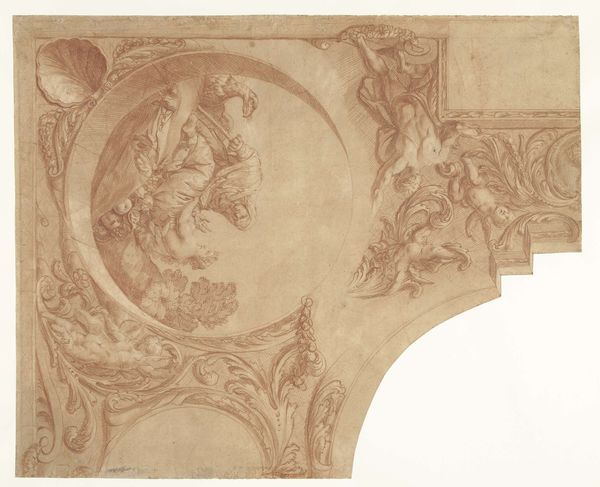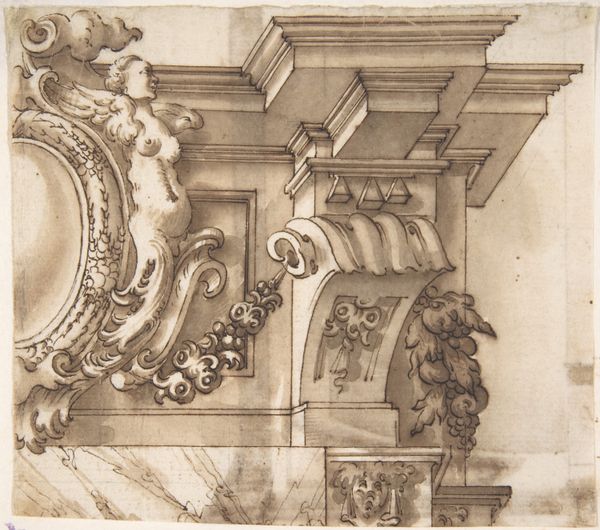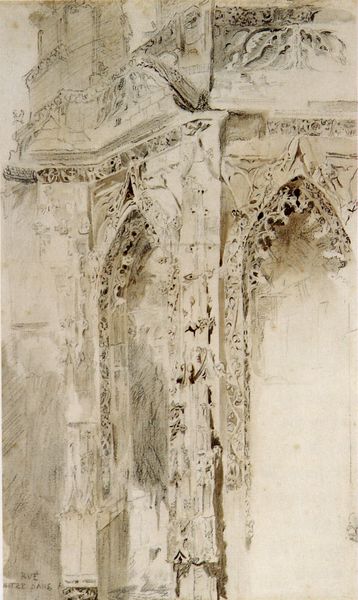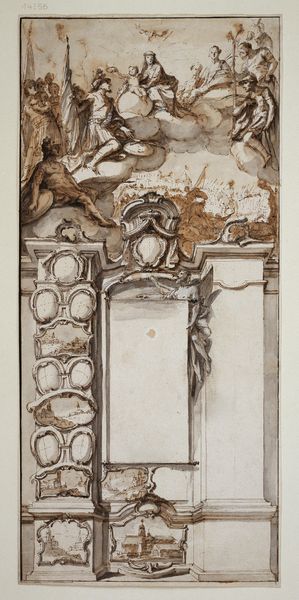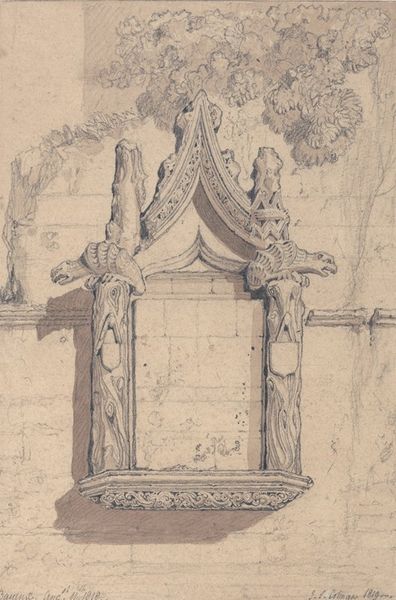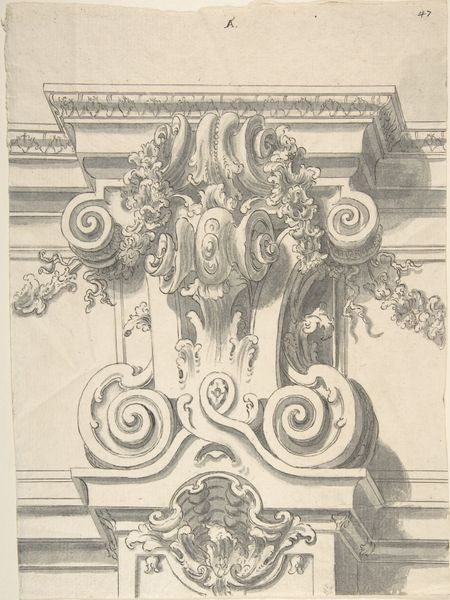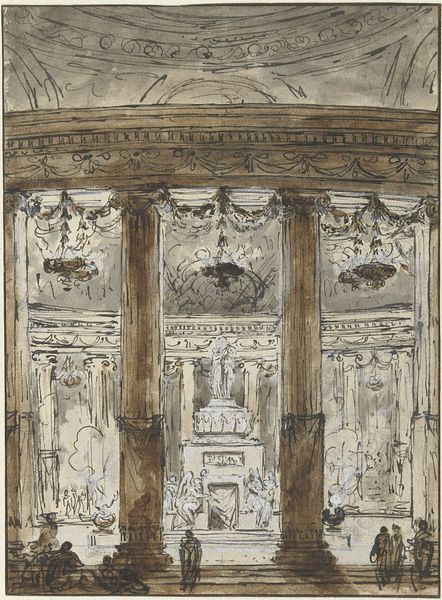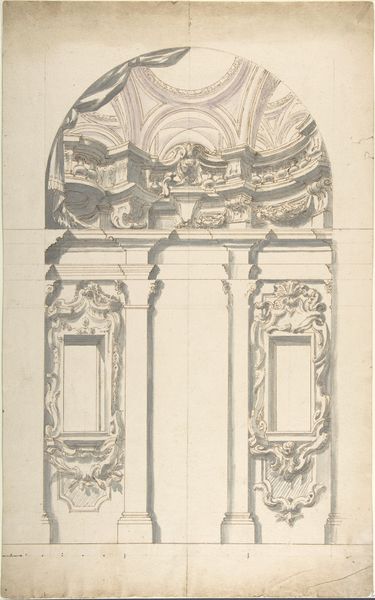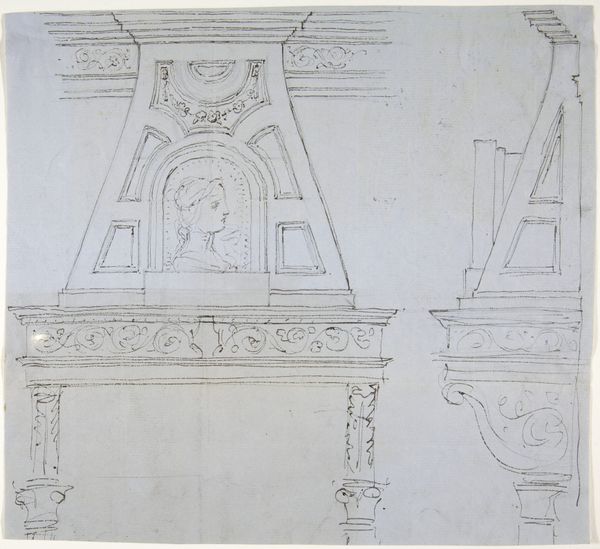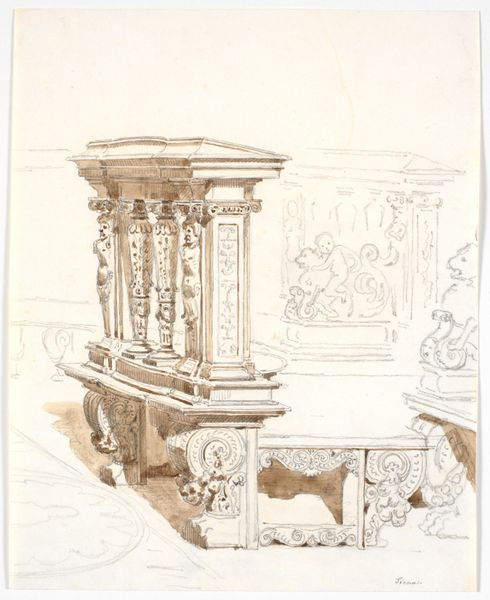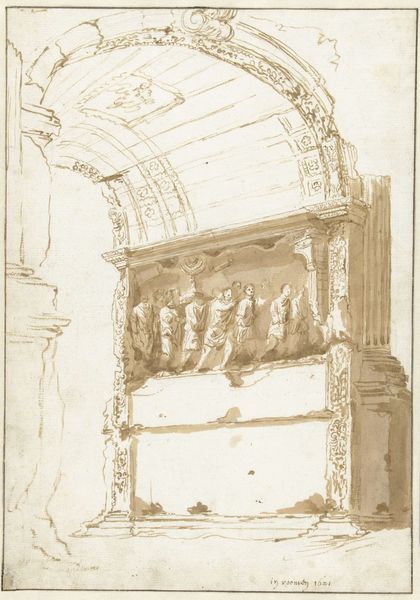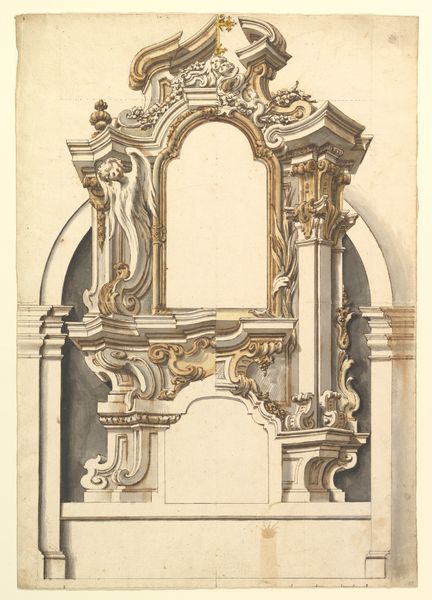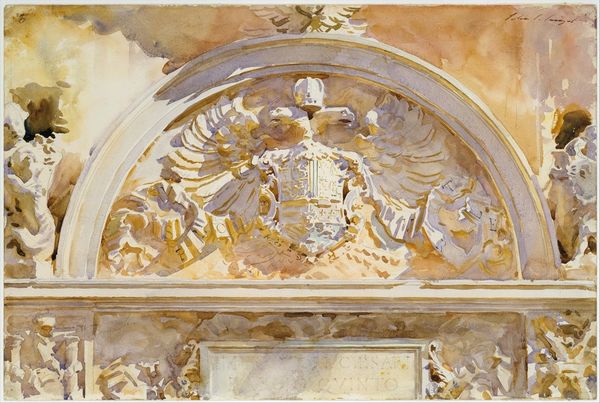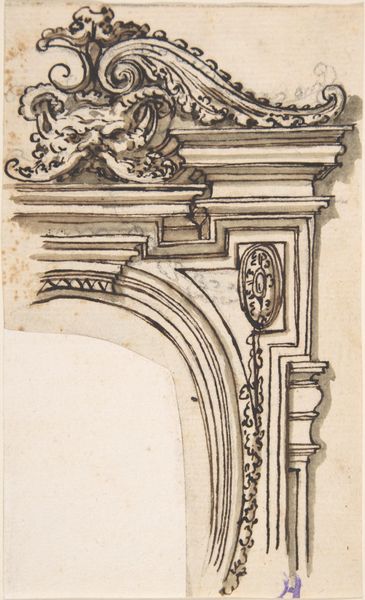
drawing, carving, ink, sculpture, architecture
#
drawing
#
carving
#
sculpture
#
romanesque
#
ink
#
column
#
sculpture
#
arch
#
decorative-art
#
architecture
Copyright: Public domain
Curator: This is a drawing called "Capital 36 of the Ducal Palace," created by John Ruskin in 1852, showcasing the artist’s detailed study of Venetian architecture in ink. It is heavily ornamented. My first reaction? Overwhelmed. So many little scenes unfolding in the stonework. What strikes you most? Editor: Immediately, I am seeing that this drawing exudes the weight of cultural memory. Even in monochrome, the carving practically vibrates with the echoes of the figures and the dense symbolism etched in every leaf. Curator: Absolutely. Ruskin's work isn't just documentation; it's interpretation. He wasn't just copying; he was attempting to distill the essence of Venetian art and culture through painstaking, hand-drawn recreations. He clearly thought art offered important moral guidance, but how do you interpret this particular choice of imagery, literally supporting the building above it? Editor: I see the architectural column, of course, and how this format becomes a miniature stage for dramas – scenes of learning, faith, and power. By depicting these stories intertwined with floral and geometric patterns, he acknowledges that history, belief, and nature are mutually and profoundly interwoven. Even the decorative choices evoke stories from the Bible or Greek tragedies; they served to constantly remind visitors to make good, moral choices. Curator: It's remarkable how such a focused study speaks to something larger. Ruskin's dedication—spending who knows how long crouched with his sketchbook—captures more than just the column; he shows an entire worldview. How might these artistic records speak to our architectural sense today, considering how radically different architectural approaches have changed in the digital age? Editor: Indeed, that resonates powerfully. The contrast highlights how contemporary architecture tends to prioritize stark minimalism and utility, where surface ornamentation is rejected, or simply seen as expensive. Perhaps by considering such pieces of art, we should find innovative ways to subtly revive such storytelling within functional constructs. After all, these works show that cultural memory should be ever-present in architecture and city designs. Curator: It's like the Ducal Palace is practically lecturing to us over the centuries through Ruskin’s mediation. Now, when you look at the work and think of this conversation, what would be your final thought about it? Editor: It reminds me that art can be found everywhere, if we just stop and see it. That every piece of stonework tells a unique story, layered with multiple histories, awaiting careful analysis and personal introspection. Curator: And that looking closely at something small, with that depth, can be incredibly rewarding, more of these overlooked moments for me too!
Comments
No comments
Be the first to comment and join the conversation on the ultimate creative platform.
